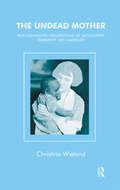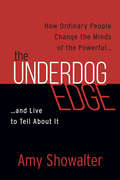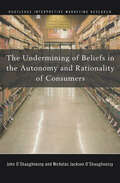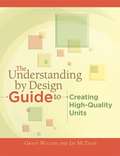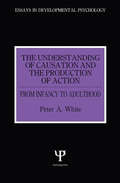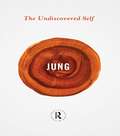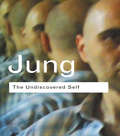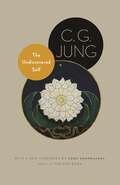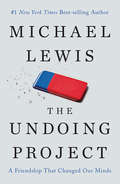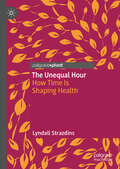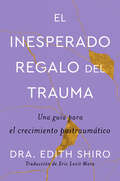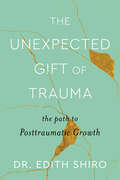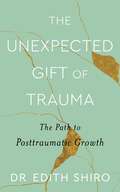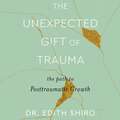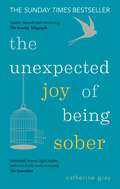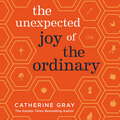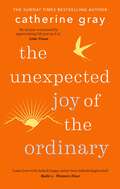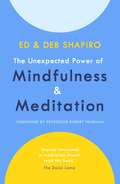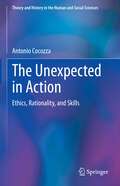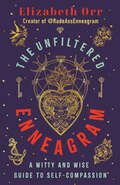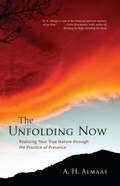- Table View
- List View
The Undead Mother: Psychoanalytic Explorations Of Masculinity, Feminity And Matricide
by Christina Wieland‘A state of mourning is something that the late twentieth century has been uniquely unable to achieve. A culture based on the interchongeobility of products and people, a throw-away culture, is not conducive to mourning…Inanimate objects hove replaced human ideals. A culture of ‘virtual reality’ which finds it difficult to distinguish between the living and the inanimate has been created - a culture of the undead. This culture is not grounded on human relationships but in the destruction of them.’ In this book, Christina Wieland offers the reader a far-reaching and devastating critique of masculinity, femininity, and contemporary culture. Drawing inspiration from the work of Melanie Klein, the author demonstrates how the Western psyche is based upon denial of the power of the mother, and the elevation of the fother into a repressive, authoritorion figure. This act of universal motricide has wrought havoc throughout Western culture. As Wieland graphically illustrates, both women and men ore denied the opportunity to mourn their separation from the mother, but must contend instead with the guilt that surrounds her murder, and the ever-present terror of her vengeful return – as ‘the undead mother’. Re-appraising masculinity and femininity, the author re-visits a wide and fascinating range of myths, fairytales and stories. Her critique casts new light on the writings of Freud, Klein, Kristeva and Irigaray. Her vivid presentations of clinical material also show how ihe undead mother mokes her presence felt in the consuhing room, and the steps which con be taken towards more genuine, reparative mourning.
The Undeniable Favor of God: Achieving My Present by Walking in the Light of God's Love
by Elizabeth Jean BruceA licensed psychologist and trauma expert shares the story of how she met life&’s challenges and achieved personal fulfillment through faith. Having a sense of purpose significantly contributes to the quality of our lives. Many people experience God-given &“callings&” to achieve distinctive goals in life. These yearnings give us a sense of fulfillment by showing how we fit into the wholeness of creation. But discovering our purpose and establishing a major long-term goal are only the first steps of the journey. We must also understand what is required of us to reach our final destination, and make sure to note the milestones we achieve along the way. There will be difficult periods during the journey. To see our way through them, it helps to surround ourselves with people who strengthen our emotional, physical, and spiritual well-being. We must also utilize our faith in God, who keeps us fortified to endure disheartening times. Dr. Bruce believes that wonderful things happen as life unfolds. In The Undeniable Favor of God, she teaches others how to focus on the beauty, truth, and light of life.
The Underdog Edge: How Ordinary People Change the Minds of the Powerful . . . and Live to Tell About It
by Amy ShowalterA prominent consultant reveals secrets to help you influence and persuade others—even when you aren&’t in a position of power. We all have occasions in which we want or need to persuade someone of greater clout, prestige, or authority to see things our way. There are books that show how to effect change from a leadership position or how to work with peers within your own organization—but what can you do when you need to exert &“upward influence&” with decision makers who can help you achieve your goals? In this book, a popular speaker and successful consultant with expertise in grassroots efforts shows which tactics are most successful when you&’re the underdog. She also shares real-world stories of everyday people who have achieved persuasion success in politics and business with someone up the food chain, the peer-reviewed science behind their success—as well as insights from those whose minds they changed.
The Undermining of Beliefs in the Autonomy and Rationality of Consumers
by Nicholas O'Shaughnessy John O'ShaughnessyThis book examines modern consumption, focusing on concepts of autonomy and rationality. In recent years, conventional ideas of 'free will' have come under attack in the context of consumer choice and similarly, postmodernists have sabotaged the very notion of consumer rationality. O Shaughnessy and O'Shaughnessy adopt a moderating perspective, rev
The Understanding by Design Guide to Creating High-Quality Units
by Grant Wiggins Jay McTigheThis guide is intended for K-16 educators either individuals or groups who may have received some training in Understanding by Design and want to continue their work independently; those who've read Understanding by Design and want to design curriculum units but have no access to formal training; graduate and undergraduate students in university curriculum courses; and school and district administrators, curriculum directors, and others who facilitate Understanding by Design work with staff. Users can go through the modules in sequence or skip around, depending on their previous experience with UbD and their preferred curriculum design style or approach. Unit creation, planning, and adaptation are easier than ever with the accompanying downloadable resources, including the Understanding by Design template set up as a fillable PDF form, additional worksheets, examples, and FAQs about the module topics that speak to Understanding by Design novices and veterans alike.
The Understanding of Causation and the Production of Action: From Infancy to Adulthood (Essays in Developmental Psychology)
by Peter Anthony WhiteThis text is an attempt to trace out a line of development in the understanding of how things happen, from origins in infancy to mature forms in adulthood. There are two distinct but related ways in which people understand things as happening, denoted by the terms "causation" and "action". This book is concerned with both.; The central claim and organizing principle of the book is that, by the end of the second year of life, children have differentiated two core theories of how things happen. These theories deal with causation and action. The two theories have a common point of origin in the infant's experience of producing actions, but thereafter diverge, both in content and in realm of application. Once established, the core theories of causation and action never change, but form a permanent metaphysical underpinning on which subsequent developments in the understanding of how things happen are erected. The story of development is therefore largely the story of how further concepts become attached to integrated with the core theories. Although the developmental and adult literatures on causal understanding appear at first glance to have little in common, in fact this appearance is illusory, and the idea of two theories helps to bring the two literatures in contact with each other.; The book begins with a survey of the main philosophical ideas about causation and action. Following this, the possible origins of understanding in infancy are reviewed, and separate chapters then deal with the development of understanding of action and causation through childhood. This is then linked to the adult understanding of action and causation, and the literature on adult causal attribution and causal judgement is reviewed from this perspective.
The Undiscovered Self (Routledge Great Minds)
by Carl Gustav JungWritten three years before his death, The Undiscovered Self combines acuity with concision in masterly fashion and is Jung at his very best. Offering clear and crisp insights into some of his major theories, such as the duality of human nature, the unconscious, human instinct and spirituality, Jung warns against the threats of totalitarianism and political and social propaganda to the free-thinking individual. As timely now as when it was first written, Jung's vision is a salutary reminder of why we should not become passive members of the herd. With a new foreword by Sonu Shamdasani.
The Undiscovered Self: Answers to Questions Raised by the Present World Crisis (Routledge Classics)
by C. G. JungIn The Undiscovered Self Jung explains the essence of his teaching for a readership unfamiliar with his ideas. He highlights the importance of individual responsibility and freedom in the context of today's mass society, and argues that individuals must organize themselves as effectively as the organized mass if they are to resist joining it. To help them achieve this he sets out his influential programme for achieving self-understanding and self-realization. The Undiscovered Self is a book that will awaken many individuals to the new life of the self that Jung visualized.
The Undiscovered Self: With Symbols and the Interpretation of Dreams (Jung Extracts #31)
by C. G. JungThese two essays, written late in Jung's life, reflect his responses to the shattering experience of World War II and the dawn of mass society. Among his most influential works, "The Undiscovered Self" is a plea for his generation--and those to come--to continue the individual work of self-discovery and not abandon needed psychological reflection for the easy ephemera of mass culture. Only individual awareness of both the conscious and unconscious aspects of the human psyche, Jung tells us, will allow the great work of human culture to continue and thrive. Jung's reflections on self-knowledge and the exploration of the unconscious carry over into the second essay, "Symbols and the Interpretation of Dreams," completed shortly before his death in 1961. Describing dreams as communications from the unconscious, Jung explains how the symbols that occur in dreams compensate for repressed emotions and intuitions. This essay brings together Jung's fully evolved thoughts on the analysis of dreams and the healing of the rift between consciousness and the unconscious, ideas that are central to his system of psychology. This paperback edition of Jung's classic work includes a new foreword by Sonu Shamdasani, Philemon Professor of Jung History at University College London.
The Undoing Project: A Friendship That Changed Our Minds
by Michael Lewis<P>How a Nobel Prize-winning theory of the mind altered our perception of reality. <P>Forty years ago, Israeli psychologists Daniel Kahneman and Amos Tversky wrote a series of breathtakingly original studies undoing our assumptions about the decision-making process. Their papers showed the ways in which the human mind erred, systematically, when forced to make judgments in uncertain situations. Their work created the field of behavioral economics, revolutionized Big Data studies, advanced evidence-based medicine, led to a new approach to government regulation, and made much of Michael Lewis's own work possible. Kahneman and Tversky are more responsible than anybody for the powerful trend to mistrust human intuition and defer to algorithms. <P>The Undoing Project is about a compelling collaboration between two men who have the dimensions of great literary figures. They became heroes in the university and on the battlefield--both had important careers in the Israeli military--and their research was deeply linked to their extraordinary life experiences. Amos Tversky was a brilliant, self-confident warrior and extrovert, the center of rapt attention in any room; Kahneman, a fugitive from the Nazis in his childhood, was an introvert whose questing self-doubt was the seedbed of his ideas. They became one of the greatest partnerships in the history of science, working together so closely that they couldn't remember whose brain originated which ideas, or who should claim credit. They flipped a coin to decide the lead authorship on the first paper they wrote, and simply alternated thereafter. <P>This story about the workings of the human mind is explored through the personalities of two fascinating individuals so fundamentally different from each other that they seem unlikely friends or colleagues. In the process they may well have changed, for good, mankind's view of its own mind. <P><b>A New York Times Bestseller</b>
The Unequal Hour: How Time Is Shaping Health
by Lyndall StrazdinsThis book is about the urgent need to have time for health. It's about why people don’t exercise, rest or eat healthy food even when they know they need to. Time has become the prescription needed to halt chronic diseases, 30 minutes of physical activity every day is a minimum, but this book argues against telling people to do more. It explains why it’s not laziness, ignorance or lack of motivation that’s the problem for unhealthy lifestyles, and why so many people lack time for their health. The book connects ideas from economics, sociology, political economy and public health to work-family dilemmas, gender and social inequality. It ends by canvassing interventions and actions from the personal, to the workplace, health promotion and urban design.
The Unexpected Gift of Trauma \ El insospechado regalo del trauma (Sp.): Una guía para el crecimiento postraumático
by Dr. Edith ShiroUn revolucionario libro sobre el trauma, que ofrece a los lectores un esquema de cinco etapas para alcanzar el crecimiento postraumático.El trauma siempre ha sido parte de la experiencia humana, y los eventos traumáticos —tanto físicos como emocionales— pueden trastornar todo nuestro ser y cambiarnos para siempre. Aunque sabemos más que hace diez años acerca de los efectos neurológicos y físicos a largo plazo que deja el trauma, pocos se dan cuenta de que la experiencia del trauma no tiene que condenarlos a una vida de sufrimiento y duelo.En este libro único, la renombrada psicóloga Edtih Shiro comparte un poderos esquema de cinco pasos para el crecimiento postraumático, un proceso terapéutico que ayuda no solo a recuperarse, sino a experimentar crecimiento y renovación después del trauma. Inspirada por sus abuelos, que fueron refugiados y sobrevivientes del Holocausto, la Dra. Shiro ha dedicado su vida a estudiar el trauma y sus secuelas. Desarrolladas a lo largo de más de tres décadas de investigación y práctica, las etapas que propone Shiro —conciencia, despertar, llegar a ser, ser y transformarse— explican cómo el trauma puede ser un catalizador para el cambio positivo y transformador. Fundado en la ciencia y lleno de herramientas prácticas y enseñanzas, El inesperado regalo del trauma revela una nueva y revolucionaria forma de ver el trauma y recuperarse de sus efectos. A groundbreaking book on trauma that offers readers a five-stage framework for achieving posttraumatic growth.Trauma has always been part of the human experience, and traumatic events – both physical and emotional –can shake our very foundation and leave us forever changed. While we know more about the lasting neurological and physical effects of trauma than we did a decade ago, few people realize that experiencing trauma doesn’t have to sentence you to a lifetime of suffering and grief.In this first book of its kind, renowned psychologist Dr. Edith Shiro shares a powerful, five-stage framework for posttraumatic growth, a therapeutic process that helps you not just recover, but experience growth and renewal in wake of trauma. Inspired by her grandparents, who were refugees and Holocaust survivors, Dr. Edith Shiro has dedicated her life to the study of trauma and its aftereffects. Developed over more than three decades of research and practice, Shiro’s stages – Awareness, Awakening, Becoming, Being, and Transforming – outline how trauma can be a catalyst for positive, transformative change.Grounded in science and filled with practical tools and takeaways, The Unexpected Gift of Trauma reveals a groundbreaking new way to think about and heal from trauma.
The Unexpected Gift of Trauma: The Path to Posttraumatic Growth
by Dr. Edith ShiroA groundbreaking approach to healing from trauma and experiencing posttraumatic growth from a leading psychologist, featuring a powerful, five-stage framework to help readers not just recover, but thrive and transform. Trauma has always been part of the human experience, and traumatic events—both physical and emotional—can shake our very foundation and leave us forever changed. While we know more about the lasting neurological and physical effects of trauma than we did a decade ago, few people realize that experiencing trauma doesn’t have to sentence you to a lifetime of suffering and grief.In this first book of its kind, renowned clinical psychologist Dr. Edith Shiro shares a powerful, five-stage framework for posttraumatic growth, a transformational process that helps you not just heal, but achieve growth and expand consciousness in the face of trauma. Inspired by her grandparents, who were refugees and Holocaust survivors, Dr. Shiro has dedicated her life to individuals, families, and communities facing trauma and its aftereffects. Developed over more than twenty-five years of research and practice, Dr. Shiro’s stages—Awareness, Awakening, Becoming, Being, and Transforming— provide a universal language and outline how trauma can be a catalyst for transformative growth.Grounded in science and psychology, and filled with practical tools and takeaways, The Unexpected Gift of Trauma offers a bold a new definition of trauma, touching on individual as well as collective and intergenerational trauma. Dr. Shiro brings the power of posttraumatic growth to the forefront and reveals a groundbreaking new way to think about and heal from traumatic experiences.
The Unexpected Gift of Trauma: The Path to Posttraumatic Growth
by Edith ShiroA groundbreaking approach to healing from trauma and experiencing posttraumatic growth from a leading psychologist, featuring a powerful, five-stage framework to help readers not just recover, but thrive and transform. Trauma has always been part of the human experience, and traumatic events can shake our very foundation and leave us forever changed. While we know more about the lasting neurological and physical effects of trauma than we did a decade ago, few people realize that experiencing trauma doesn't have to sentence you to a lifetime of suffering and grief.In this first book of its kind, renowned clinical psychologist Dr Edith Shiro shares a powerful, five-stage framework for posttraumatic growth, a transformational process that helps you not just heal, but achieve growth and expand consciousness in the face of trauma. Inspired by her grandparents, who were refugees and Holocaust survivors, Dr Shiro has dedicated her life to individuals, families, and communities facing trauma and its aftereffects. Developed over more than twenty-five years of research and practice, Dr Shiro's stages - Awareness, Awakening, Becoming, Being, and Transforming - provide a universal language and outline how trauma can be a catalyst for transformative growth.Grounded in science and psychology, and filled with practical tools and takeaways, THE UNEXPECTED GIFT OF TRAUMA offers a bold a new definition of trauma, touching on individual as well as collective and intergenerational trauma. Dr Shiro brings the power of posttraumatic growth to the forefront and reveals a groundbreaking new way to think about and heal from traumatic experiences.
The Unexpected Gift of Trauma: The Path to Posttraumatic Growth
by Edith ShiroA groundbreaking approach to healing from trauma and experiencing posttraumatic growth from a leading psychologist, featuring a powerful, five-stage framework to help readers not just recover, but thrive and transform. Trauma has always been part of the human experience, and traumatic events can shake our very foundation and leave us forever changed. While we know more about the lasting neurological and physical effects of trauma than we did a decade ago, few people realize that experiencing trauma doesn't have to sentence you to a lifetime of suffering and grief.In this first book of its kind, renowned clinical psychologist Dr Edith Shiro shares a powerful, five-stage framework for posttraumatic growth, a transformational process that helps you not just heal, but achieve growth and expand consciousness in the face of trauma. Inspired by her grandparents, who were refugees and Holocaust survivors, Dr Shiro has dedicated her life to individuals, families, and communities facing trauma and its aftereffects. Developed over more than twenty-five years of research and practice, Dr Shiro's stages - Awareness, Awakening, Becoming, Being, and Transforming - provide a universal language and outline how trauma can be a catalyst for transformative growth.Grounded in science and psychology, and filled with practical tools and takeaways, THE UNEXPECTED GIFT OF TRAUMA offers a bold a new definition of trauma, touching on individual as well as collective and intergenerational trauma. Dr Shiro brings the power of posttraumatic growth to the forefront and reveals a groundbreaking new way to think about and heal from traumatic experiences.
The Unexpected Joy of Being Sober: THE SUNDAY TIMES BESTSELLER
by Catherine GrayTHE SUNDAY TIMES BESTSELLER 'Gray's tale of going sober is uplifting and inspiring' - The Evening Standard 'An icon of the Quit Lit movement' - Condé Nast Traveller 'Fascinating' - Bryony Gordon 'Not remotely preachy' - The Times 'Jaunty, shrewd and convincing' - Sunday Telegraph 'Admirably honest, light, bubbly and remarkably rarely annoying' - Alice O'Keeffe, Guardian 'Truthful, modern and real' - Stylist 'Brave, witty and brilliantly written' - Marie Claire 'The Unexpected Joy of Being Sober came to me at a time when I much needed it... The book became my best friend, and got me through, and took me on a journey.' - Sadie Frost 'Particularly lovely, because it's not a deep and dark dive into someone's terrible addiction. It's a celebration of everything that she has gained from not drinking' - Laura Donnelly Ever sworn off alcohol for a month and found yourself drinking by the 7th? Think there's 'no point' in just one drink? Welcome! There are millions of us. 64% of Brits want to drink less.Catherine Gray was stuck in a hellish whirligig of Drink, Make horrible decisions, Hangover, Repeat. She had her fair share of 'drunk tank' jail cells and topless-in-a-hot-tub misadventures.But this book goes beyond the binges and blackouts to deep-dive into uncharted territory: What happens after you quit drinking? This gripping, heart-breaking and witty book takes us down the rabbit-hole of an alternative reality. A life with zero hangovers, through sober weddings, sex, Christmases and breakups.In The Unexpected Joy of Being Sober, Catherine Gray shines a light on society's drink-pushing and talks to top neuroscientists and psychologists about why we drink, delving into the science behind what it does to our brains and bodies.Much more than a tale from the netherworld of addicted drinking, this book is about the escape, and why a sober life can be more intoxicating than you ever imagined. Whether you're a hopelessly devoted drinker, merely sober-curious, or you've already ditched the drink, you will love this book. 'Haunting, admirable and enlightening' - The Pool 'A riveting, raw, yet humorous memoir with actionable advice. A truly unique blend of storytelling and science that holds a universe of hope.' - Annie Grace, author of This Naked Mind 'Like listening to your best friend teach you to be sober. Lighthearted but serious, it's packed with ideas, tools, tips and, most importantly, reasons for living a sober life. This book is excellent.'- Eric Zimmer, host of podcast The One You Feed 'Gray's fizzy writing succeeds in making this potentially boring-as-hell subject both engaging and highly seductive' - The Bookseller 'Catherine Gray is an exceptional writer. Her exquisitely crafted thoughts on the joys of being sober are not only deeply honest and pragmatic, but she manages to infuse tons of humor. This is a delightful, informative, and compelling read for all those who are sober or seeking sobriety.' - Sasha Tozzi, Huffington Post columnist 'Catherine's writing style and voice captivate me. She has a way of translating her story into an experience I don't want to end. I want to drink every drop she produces.' - Holly Whitaker, founder of Hip Sobriety School and co-presenter of Home podcast 'This book is great. A balanced, informative and entertaining mélange of memoir, sociology and psychology. I identified very strongly with huge sections of it.' - Jon Stewart, guitari
The Unexpected Joy of Being Sober: THE SUNDAY TIMES BESTSELLER (The Unexpected Joy Of #1)
by Catherine GrayGoing sober will make you happier, healthier, wealthier, slimmer and sexier. Despite all of these upsides, it's easier said than done. This inspirational, aspirational and highly relatable narrative champions the benefits of sobriety; combining the author's personal experience, factual reportage, contributions from experts and self-help advice.
The Unexpected Joy of Being Sober: THE SUNDAY TIMES BESTSELLER (The Unexpected Joy Of #1)
by Catherine GrayGoing sober will make you happier, healthier, wealthier, slimmer and sexier. Despite all of these upsides, it's easier said than done. This inspirational, aspirational and highly relatable narrative champions the benefits of sobriety; combining the author's personal experience, factual reportage, contributions from experts and self-help advice.
The Unexpected Joy of the Ordinary
by Catherine Gray**From the Sunday Times Bestselling Author**We're told that happiness is in the extraordinary. It's on a Caribbean sun lounger, in the driving seat of a luxury car, inside an expensive golden locket, watching sunrise from Machu Picchu. We strive, reach, push, shoot for more. 'Enough' is a moving target we never quite reach.When we do brush our fingertips against the extraordinary a deeply inconvenient psychological phenomenon called the 'hedonic treadmill' means that, after a surge of joy, our happiness level returns to the baseline it was at before the 'extra' event.So, what's the answer? The Unexpected Joy of the Ordinary theorises that the solution is rediscovering the joy in the ordinary that we so often now forget to feel. Because we now expect the pleasure of a croissant, a hot shower, a yoga class, someone delivering our shopping to our door, we no longer feel its buzz. The joy of it whips through us like a bullet train, without pause.Catherine Gray was a grandmaster in the art of eye-rolling the ordinary, and skilled in everlasting reaching. Until the black dog of depression forced her to re-think everything.Along the way, she discovered some surprising realities about the extraordinaries among us: that influencers risk higher rates of anxiety and depression, high-rollers are less happy, and huge frothy weddings increase the likelihood of divorce.Learning how to be exalted by the everyday is the most important lesson we can possibly learn. In Catherine Gray's hilarious, insightful, soulful (and very ordinary) next book, you may learn to do just that.PRAISE FOR CATHERINE GRAY'S WRITING:"Fascinating" Bryony Gordon."Not remotely preachy" The Times"Jaunty, shrewd and convincing" The Telegraph "Admirably honest, light, bubbly and remarkably rarely annoying" The Guardian(p) 2019 Octopus Publishing Group
The Unexpected Joy of the Ordinary (The Unexpected Joy Of #4)
by Catherine Gray**From the Sunday Times Bestselling Author**Life-affirming - THE TELEGRAPHWonderful - INDEPENDENTShe made it her mission to learn how to be default happy rather than default disgruntled - RADIO 4 - WOMAN'S HOURTake a leaf out of Gray's book and be kinder to yourself by appreciating life just as it is - IRISH TIMESThis book came to me in an hour of need - during lockdown when I had to focus on the positive, appreciate simple things, not lose my shit, and value each day. It was a pure joy for me and held my hand - SADIE FROSTInteresting and joyful. Lights a path that could help us to build resilience against society's urging to compare life milestones with peers - LANCET PSYCHIATRY Underwhelmed by your ordinary existence? Disillusioned with your middlin' wage, average body, 'bijou' living situation and imperfect loved ones? Welcome to the club. There are billions of us. The 'default disenchanted'. But, it's not us being brats. Two deeply inconvenient psychological phenomenons conspire against our satisfaction. We have negatively-biased brains, which zoom like doom-drones in on what's wrong with our day, rather than what's right. (Back in the mists of time, this negative bias saved our skins, but now it just makes us anxious). Also, something called the 'hedonic treadmill' means we eternally quest for better, faster, more, like someone stuck on a dystopian, never-ending treadmill. Thankfully, there are scientifically-proven ways in which we can train our brains to be more positive-seeking. And to take a rest from this tireless pursuit. Whew.Catherine Gray knits together illuminating science and hilarious storytelling, unveiling captivating research showing that big bucks don't mean big happiness, extraordinary experiences have a 'comedown' and budget weddings predict a lower chance of divorce. She reminds us what an average body actually is, reveals that exercising for weight loss means we do less exercise, and explores the modern tendency to not just try to keep up with the Murphys, but keep up with the Mega-Murphies (see: the social media elite).Come on in to this soulful and life-affirming read, to discover why an ordinary life may well be the most satisfying one of all.
The Unexpected Joy of the Ordinary (The Unexpected Joy Of #4)
by Catherine Gray**From the Sunday Times Bestselling Author**Life-affirming - THE TELEGRAPHWonderful - INDEPENDENTShe made it her mission to learn how to be default happy rather than default disgruntled - RADIO 4 - WOMAN'S HOURTake a leaf out of Gray's book and be kinder to yourself by appreciating life just as it is - IRISH TIMESThis book came to me in an hour of need - during lockdown when I had to focus on the positive, appreciate simple things, not lose my shit, and value each day. It was a pure joy for me and held my hand - SADIE FROSTInteresting and joyful. Lights a path that could help us to build resilience against society's urging to compare life milestones with peers - LANCET PSYCHIATRY Underwhelmed by your ordinary existence? Disillusioned with your middlin' wage, average body, 'bijou' living situation and imperfect loved ones? Welcome to the club. There are billions of us. The 'default disenchanted'. But, it's not us being brats. Two deeply inconvenient psychological phenomenons conspire against our satisfaction. We have negatively-biased brains, which zoom like doom-drones in on what's wrong with our day, rather than what's right. (Back in the mists of time, this negative bias saved our skins, but now it just makes us anxious). Also, something called the 'hedonic treadmill' means we eternally quest for better, faster, more, like someone stuck on a dystopian, never-ending treadmill. Thankfully, there are scientifically-proven ways in which we can train our brains to be more positive-seeking. And to take a rest from this tireless pursuit. Whew.Catherine Gray knits together illuminating science and hilarious storytelling, unveiling captivating research showing that big bucks don't mean big happiness, extraordinary experiences have a 'comedown' and budget weddings predict a lower chance of divorce. She reminds us what an average body actually is, reveals that exercising for weight loss means we do less exercise, and explores the modern tendency to not just try to keep up with the Murphys, but keep up with the Mega-Murphies (see: the social media elite).Come on in to this soulful and life-affirming read, to discover why an ordinary life may well be the most satisfying one of all.
The Unexpected Power of Mindfulness and Meditation
by Deb Shapiro Ed Shapiro'Anyone interested in meditation should read this book.' The Dalai Lama'Ed and Deb remind us all just how important it is to look after the health and happiness of the mind. With warmth and humor they show us how to integrate the timeless qualities of awareness and compassion into everyday life.' Andy Puddicombe, founder, HEADSPACEThis book is essential reading for anyone - both newcomers to mindfulness and meditation as well as long-time devotees - wishing to make positive changes in their lives. It teaches you how to reach your quiet inner place where meditation and mindfulness can help resolve issues such as anger and fear, relationship breakdown, forgiveness, parenthood, and a lack of self-esteem. Read wisdom from the Dalai Lama, Jon Kabat-Zinn and Marianne Williamson who discuss their methods of maintaining good mental health and happiness. People everywhere now realise the profound benefits of mindfulness and meditation to reduce deep-rooted stress, calm the mind, become kinder, and find true happiness.
The Unexpected in Action: Ethics, Rationality, and Skills (Theory and History in the Human and Social Sciences)
by Antonio CocozzaThe book is a true knowledge-enhancing project, dealing with the forms of rationality at work in social life, which are so many, varied and complex. Published already in Spanish and Italian, it analyses the role played by rationality through the lens of social theories in order to propose a problematic interpretation of human action. Since there is nothing more practical than a good theory when seeking to understand our society, the book reflects on the theoretical approaches that provide useful categories by means of which to understand and interpret individual, organizational, and institutional action. It proposes an analysis of a wide variety of classics by eminent European and Anglo-American thinkers, such as Dahrendorf, Mannheim, Marx, Popper, Weber, Habermas, Luhmann, Machiavelli, Pareto, Ardigò, Cesareo, Parsons, Schütz, Alexander, Bauman, Beck, Sennett, Antiseri, Boudon, Sen, Simon, to shed light on the relationship between rationality, difficulties in thinking and extra-rationality. Finally, the reasons for unexpected action are investigated as well as the strategic role played by ethics, rationality and skills in postmodern societies on the basis of the contributions of Nussbaum and Piketty.
The Unfiltered Enneagram: A Witty and Wise Guide to Self-Compassion
by Elizabeth OrrFrom Instagram&’s snarkiest Enneagram expert comes a hilarious and insightful book that shows how embracing our shadow side is our best path toward greater self-awareness and compassion.Most Enneagram books focus on stroking ego rather than challenging it. Elizabeth Orr&’s The Unfiltered Enneagram offers practical strategies for liberating yourself from your own garbage. It&’s a humorous, no-frills reckoning with our shadow side—the ways we cope with stress or fear—that unlocks the life-changing wisdom of this popular personality typology system. Readers will discover that courageously and comically acknowledging the worst attributes of their Enneagram Type can bring out the best in themselves.Filled with laugh-out-loud descriptions, sobering truths, and inspiring prompts, each chapter is an under-the-rug look at the nine Enneagram Personality Types:• Type One—R Is for Reformer (and Resentment)• Type Two—Self-Sacrifice with Some Serious Strings Attached• Type Three—Hall of Mirrors in a House of Cards• Type Four—Feelin&’ Misunderstood (and I&’m Going to Make It Your Problem)• Type Five—When Intellectual Maximalism Meets Emotional Minimalism• Type Six—Who Needs Trust When I&’ve Got Projection?• Type Seven—The Paradoxical Paralysis of Making Too Many Awesome Plans• Type Eight—Large, in Charge, and Just This Side of Belligerent• Type Nine—Comfortably Numb (and Impressively Stubborn)Insightful for long-time Enneagram enthusiasts, pragmatic for newer fans, and hilarious and accessible for everyone, The Unfiltered Enneagram shines a generous light on the good, the bad, and the ugly sides of us all—inviting us to see that the only way to find self-compassion is to embrace wholeness.
The Unfolding Now: Realizing Your True Nature through the Practice of Presence
by A. H. AlmaasThe keys to self-knowledge and deep contentment are right here before us in this very moment--if we can simply learn to live with open awareness. In The Unfolding Now, A. H. Almaas presents a marvelously effective practice for developing the transformative quality of presence. Through a particular method of self-observation and contemplative exploration that he calls inquiry, we learn to live in the relaxed condition of simply "being ourselves," without interference from feelings of inadequacy, drivenness toward goals, struggling to figure things out, and rejecting experiences we don't want. Almaas explores the many obstacles that keep us from being present--including defensiveness, ignorance, desire, aggression, and self-hatred--and shows us how to welcome with curiosity and compassion whatever we are experiencing.
